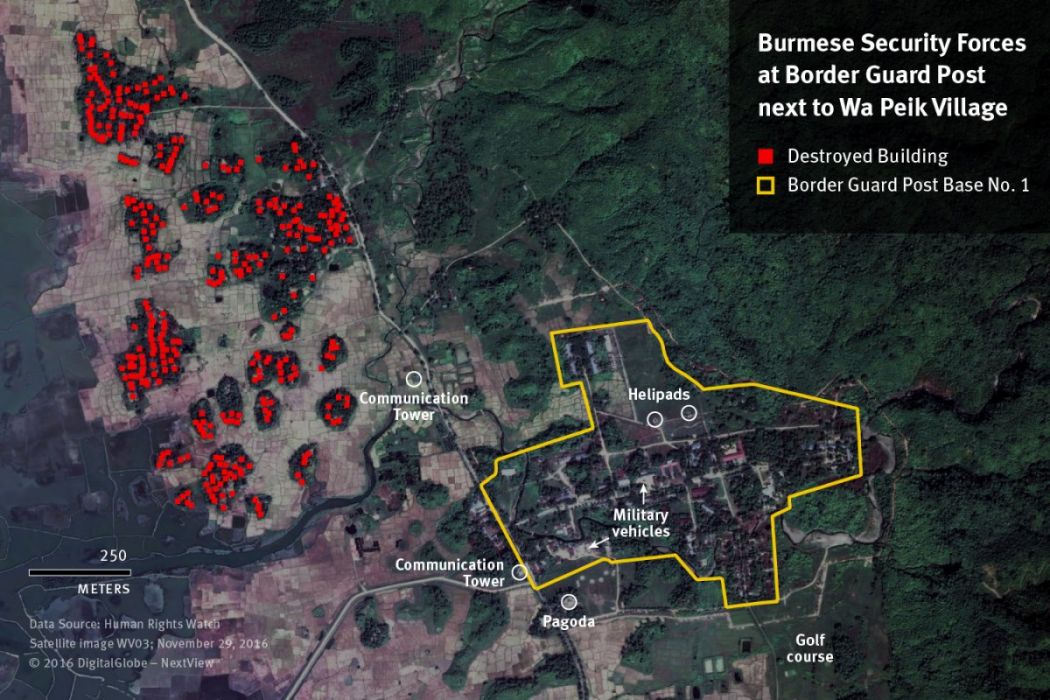Analysis of new satellite imagery collected by Human Rights Watch places responsibility for the burning of Rohingya villages squarely with the Myanmar military and appear to disprove the claim made by military chief Senior General Min Aung Hlaing that the Rohingya are setting fire to their own homes.
Three points in the analysis make the case:
1. The burning appear to move westward, along with the military forces carrying out “clearance operation”.
The pattern of burnings over time suggest government responsibility for the destruction. The first three villages that were burned, between October 9 and 14, are all next to the main Taung Pyo district road, while the villages burned during the second and larger round between November 12 and 15 lie approximately 3 to 5 kilometers west of the road. This progression is consistent with military forces advancing westward rather than militants or local residents haphazardly setting fires.
2. The fires tend to begin shortly after reports of attacks against the military, suggesting reprisals.
Human Rights Watch documented systematic building destruction in villages on three occasions after government forces reportedly came under attack in the area, suggesting a reprisal element to the arson. In some cases, the fires started hours after a reported attack and in other cases a day or two later. Following an attack on a joint military-border guard patrol in Pwint Hpyu Chaung on the morning of November 12, for example, more than 800 buildings in total were burned in that village and five others nearby over the next four days.
3. The first village to burn was Wa Peik Village, which is adjacent to Border Guard Post 1, where nine government officers were killed by militants on October 9. The fires began just hours after the attack.
The imagery reveals the presence of Burmese security forces in the Border Guard Post Number 1 that is located directly adjacent to Wa Peik Village, which was almost entirely burned down in three waves over a one-month period. Militants attacked the post and two other security force facilities on the morning of October 9, killing nine government officers and sparking the last two months of violence. The first fires in Wa Peik started in the early afternoon of October 9, hours after the attack on the border guard base. Human Rights Watch also identified the subsequent presence of multiple military transport vehicles and the periodic landing of military helicopters at the base.
Corroborating the satellite imagery analysis is testimony from Rohingya refugees in Bangladesh that Myanmar army soldiers using gasoline and rocket launchers to burn their villages.
Read more about the Human Righsts Watch analysis and how the Myanmar government is trying to discredit it here.





Reader Interactions